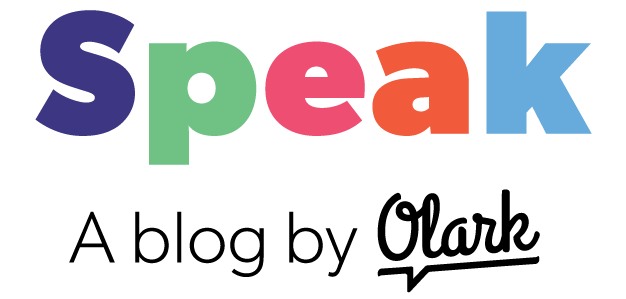
Nothing is more exciting to an entrepreneur than a new user, standing at the precipice, poised to convert. So much could go wrong at this moment. Will they put in their email address? Will they go to the next screen? Will they enter in payment information or share referrals? Is your product even right for this person?
Before you collapse into a quivering puddle of doubt, you may want to talk to Samuel Hulick. Samuel, the creator of the popular "User Onboarding" website, has broken down the user acquisition process to scientific levels and his "teardowns" are great lessons in what you may want to emulate (and avoid).
In this conversation, the concluding half of a two-part interview, we talk about how to make sure your users are right for you, what to do about the competition and more.
When it's not working
You may discover, through analytics or live chat, that your process isn't working. Of course there is a temptation to fix it by using tool tips or other layers to give people information about how the process is supposed to work. Samuel says, "there’s a great blog post by Jason Fried from 37Signals called 'Signs on Signs' where he has these photos of signs out in the wild like something that says 'Restrooms are THIS way' and apparently not many people noticed it, so they put a sign on top of that saying 'This is where the restrooms are' and it's pointing to the sign that’s pointing to where the restrooms are instead of creating a sign that worked to begin with."
"Look at spots that are underperforming or that people find confusing. Again, it's easier if you’re present in that experience with them via live chat or concierge onboarding, or just through your support department. Understand what’s frustrating and then fix it as opposed to admitting that 'Yeah, we know this sort of sucks, but here’s our override that’s pasted on top of it'”.
The Competition
It can be tempting to try and measure your success against the competition. Samuel cautions, "don’t spend a lot of time paying attention to what your competitors are doing. You really don’t know what’s working for them or not. They could easily be doing something that they were pulling off of somebody else’s site that they speculated was working and it might not be working for either of them. It's also a little bit short-sighted in that, if you’re in a market and you have a competitor, you’re probably serving customers in a slightly different way. Even if it does work for them, it’s going to work for their customers in the way that they serve their particular customers. Don’t get better at serving your competitor’s customers; get better at serving your own."
Getting more from users than they planned on
I asked Samuel about how he approaches asking new users for information beyond just an email address. He replied, "one thing that I’ve always been biased against are when you ask for referrals as part of the sign-up process that are basically ‘give us your name and your email address’ and ‘give us access to your contact book and we’ll go in and tell all your friends how great you think this is’.
"As a user, I’ve never totally been comfortable with that because I haven’t even totally gotten into the product itself. I don’t know necessarily what you’re going to say on my behalf; there’s a lot of anxiety there. Wait until people have experienced the value and they can make a more personal and genuine recommendation to friends and you can facilitate it after that.
"If you’re asking for [personal information] that I don’t see how it benefits me either directly or indirectly, that’s going be too much of an ask. And that can range from email address to social security number, whatever it might be. It’s not like there is a hard line drawn.
"There is this ring of trust that I have and you are either inside it or outside it. So build trust by starting small, ask for smaller things. Providing as much as value as you can leading up to those bigger, more challenging requests can grease the skins for that sort of thing going through. Also just provide extra information to explain why it’s necessary to ask at this particular time. And especially why it’s in the user’s benefit to provide it."
What if you want information that does go beyond the "reasonable" scope? "You would have to wait until you have built up a lot of trust. Hold off asking them until they have been a paying customer for a month or two, for example. Then you can tie them to a particular milestone saying, 'hey, it looks like you just closed your fifth sale' or something like that."
Qualifying your users in onboarding
Samuel pointed out that a lot of onboarding experiences don't work, "not only failing to bring in all the qualified users that it could have, but also conversely letting in people it shouldn’t have. Ultimately you are trying to increase the likelihood that people become successful when adopting your product. Start by planting the seed in the early early stages of whenever people are hearing about it through maybe a google advert or referral from a friend.
"Orienting people around the value that you provide and how they can become more successful by using your product as early as possible will not only send a stronger signal to people who should be using the product but also let people who shouldn’t be using your product filter themselves out. That’s one way of just looking at onboarding as applying all the resources that we have available, how can we speak strongly to the right people and save the best resources for them?"
Good UX = Happy Customers
Onboarding isn't just a series of steps to sign up, it's an experience with your product. And in a way, it's a kind of social science. Says Samuel, "onboarding is an area where there is significant amount of overlap between the qualitative and the quantitative aspects of UX. You can measure what happens when, for example, 'we require these 7 steps in order to get set up', 'how many people we are losing at each of those steps', or 'how many people are coming back a second time'. This data lets us say at the end of the day that we clearly improved on these particular core metrics by taking a UX approach.
"If you’re looking at diagnosing the issues, there’s qualitative and quantitative. So, the qualitative solutions would be live chat and surveys through things like SurveyMonkey or Qualaroo. Then on the quantitative side, there would be Kissmetrics, Mixpanel, and others like that. Crazyegg is something that I use all the time to look at 'Why are people frustrated with this step?' and it’s because they’re clicking on an image that actually doesn’t even link to anywhere."
Great onboarding has impact on the company in other ways than signups. Samuel observes, "if you’re taking a user experience approach to improve your onboarding, you should be able to save a lot of customer support’s time off the bat. Then if you look at the amounts of tickets or questions that people have in the first fourteen or thirty days of being users and compare that to the questions that they have on an ongoing basis, typically it’s those initial users who are generating a lot of the support requests. Getting rid of onboarding problems can help save resources for your long-time customers and provide them with support on an on-going basis which would certainly help with retention as well."
You can read Part 1 of the conversation here. Check out Samuel's book and his beta software for onboarding.

